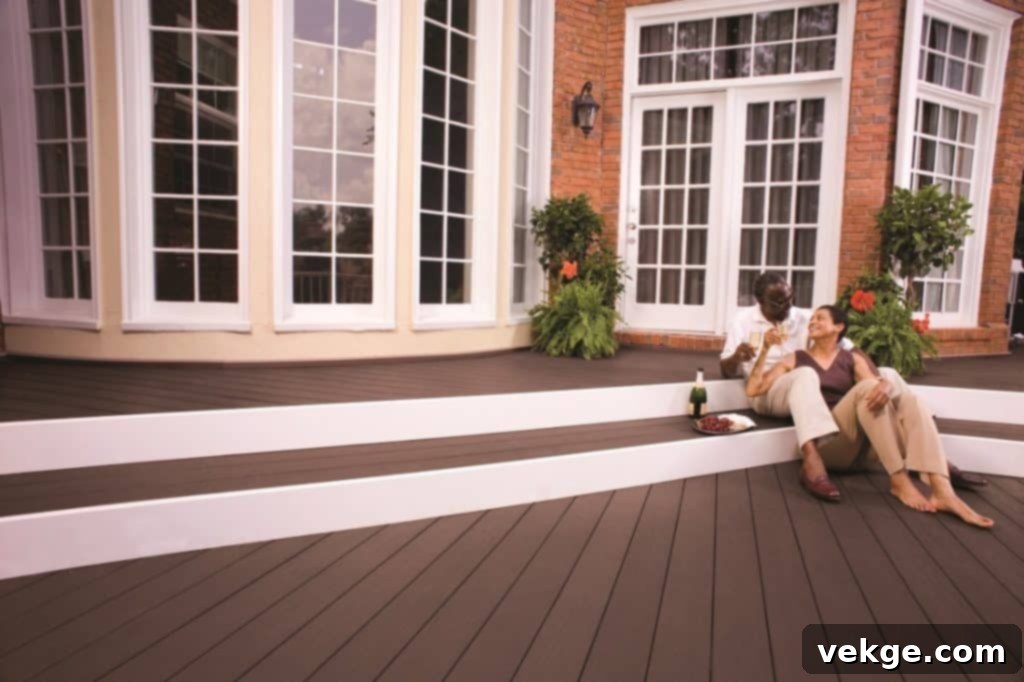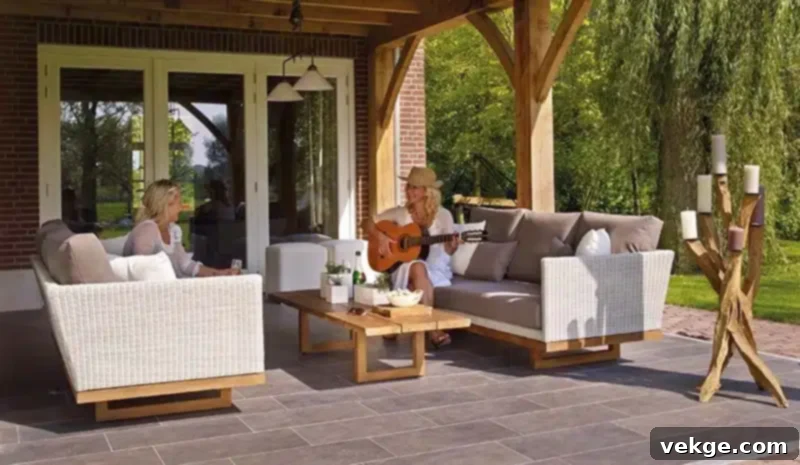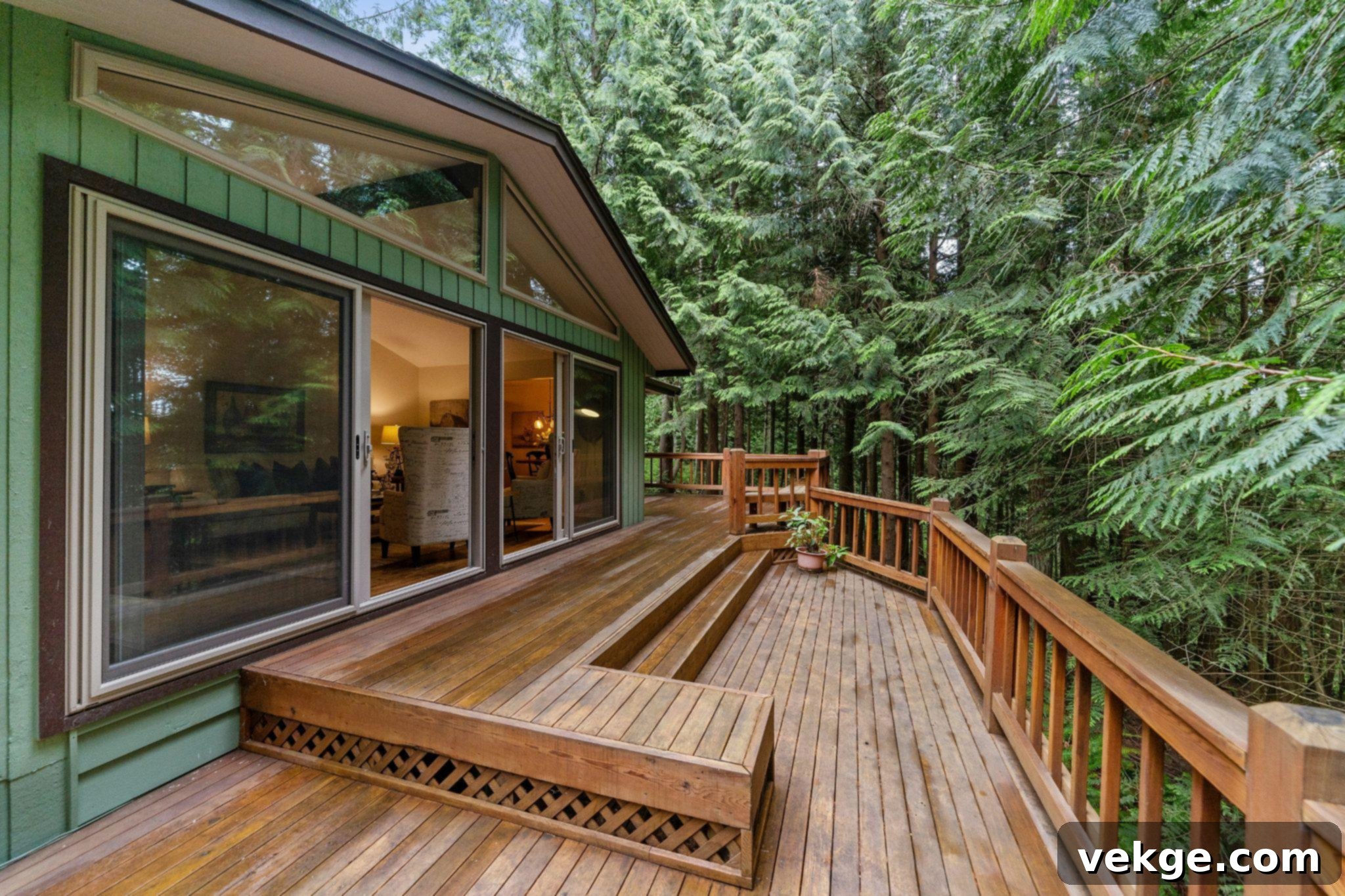Deck vs. Patio: The Ultimate Guide to Boosting Your Home’s Value
For many homeowners, enhancing their home’s value is a top priority. A higher home value provides not only a sense of stability and security but also contributes to better financial standing, increased resale potential, and a stronger return on investment. Among the most popular and effective ways to achieve this is by investing in outdoor living spaces. Decks and patios stand out as primary contenders, each offering unique benefits and considerations.
This comprehensive guide will delve into the factors involved in choosing between a deck and a patio, helping you make informed decisions that align with your lifestyle, budget, and ultimate goal of maximizing your home’s value. We’ll explore their respective advantages, potential drawbacks, and strategies to maximize their return on investment.
Is a Deck a Good Investment?

Adding a deck to your home can be a superb investment, significantly boosting your property’s appeal and functionality. Many homeowners report an impressive return on investment (ROI), with some studies indicating up to 44% of the installation cost recouped at resale. This makes decks one of the most cost-effective home improvement projects.
Advantages of Investing in a Deck
- Versatility for Terrain: One of the most significant advantages of a deck is its adaptability. Decks can be easily installed on uneven or sloped land, where building a patio would be significantly more challenging or require extensive grading. This makes them ideal for homes with varying elevations in their backyard.
- Enhanced Views: Elevated above ground level, decks often provide superior views of your yard or surrounding landscape, creating a more immersive outdoor experience. This elevated perspective can transform a mundane backyard into a picturesque retreat.
- Customization and Aesthetic Appeal: Decks are highly customizable. You can choose from various materials, railing styles, and finishes. Wooden decks, in particular, can be stained or painted to perfectly complement your house’s existing appearance and architectural style, creating a seamless transition from indoor to outdoor living.
- Comfort and Warmth: Natural wood decks absorb and retain heat, making them comfortable underfoot even on cooler evenings. This natural warmth enhances the usability of the space for longer periods.
- Defined Outdoor Living Space: A deck clearly defines an outdoor living area, perfect for entertaining, dining al fresco, or simply relaxing. It extends your home’s usable square footage, making it feel larger and more accommodating.
Potential Drawbacks of Decks
- Maintenance Requirements: Depending on the materials used, decks may require regular maintenance. Wooden decks, for instance, need periodic cleaning, sealing, staining, or painting to protect them from weathering, rot, and insect damage. Composite decks offer lower maintenance but come with a higher upfront cost.
- Lifespan: While durable, decks, especially those made of natural wood, may have shorter lifespans compared to some patio materials if not properly maintained. Exposure to elements can lead to wear and tear over time.
- Permits and Regulations: Building a deck often requires permits from your local municipality. This is because decks are attached to the house’s structure and can impact its appearance and safety. The permit process can involve inspections, waiting periods, and associated fees, adding to the project’s timeline and cost. It’s crucial to consult with your local building department early in the planning process.
Maximizing Your Deck’s Value
The return on investment for your deck project will largely depend on several key factors, including the materials chosen, your geographical location, labor costs, and the timing of your investment.
Material and Design Choices for Decks
The selection of materials is paramount and will significantly influence both the initial cost and the long-term value of your deck. Material costs can vary widely:
- Basic Materials: Simple pressure-treated lumber might start around $4 per square foot. Pressure-treated lumber is popular due to its resistance to insects and rot, making it a cost-effective choice for many homeowners.
- Mid-Grade Materials: Options like cedar or redwood typically cost around $8 per square foot. These woods offer natural beauty and resistance to decay, though they still require maintenance. Bamboo is another emerging eco-friendly option known for its strength and sustainability.
- Premium Materials: High-end options such as Ipe or composite decking can range up to $15 per square foot or more. Ipe, a Brazilian hardwood, is renowned for its exceptional durability, density, and natural resistance to rot, insects, and weather, making it three times more expensive than cedar. Composite decking, made from recycled plastics and wood byproducts, is an increasingly popular “greener” option. It offers superior resistance to fading, staining, scratching, and mold, requiring minimal maintenance over its long lifespan. While wood provides excellent immediate aesthetic value, remember to factor in the ongoing costs of sealing, staining, and sanding over time for its longevity.
Beyond materials, the deck’s decor and design significantly impact its value. High-value design elements include:
- Integrated Lighting: Deck lights enhance usability and ambiance, making the space enjoyable after sunset.
- Proper Deck Footings: Ensures structural integrity and longevity.
- Thoughtful Landscaping: Integrating the deck with the surrounding landscape through planting beds or decorative elements creates a cohesive and inviting outdoor area.
- Polished Designs: Features like picture framing (a border around the deck surface), built-in benches, pergolas, or even outdoor kitchen setups are much more valuable than simple, DIY platform decks, signaling a higher quality and more thoughtful investment.
- Multi-level Designs: For larger yards, multi-level decks can create distinct zones for dining, lounging, or even a hot tub, enhancing functionality and aesthetic appeal.
Location and Labor Cost for Decks
Your geographical location profoundly influences deck material costs, available choices, and whether a deck is considered a particularly valuable addition to your home. In warmer climates, where outdoor living is a significant part of the lifestyle, decks often yield higher ROIs. Homebuyers in these regions prioritize spaces for lounging by the pool, grilling, and outdoor entertaining.
Conversely, in colder, wintry states, while decks are still appreciated, the harsh weather can accelerate wear and tear on wooden decks. In such climates, considering more durable, weather-resistant materials like composite decking can be a wiser long-term investment, as it will last longer and require less maintenance than wood exposed to snow and ice. Labor costs also vary by region, influenced by local demand, contractor availability, and the complexity of your deck’s design.
Timing Your Deck Investment
The timing of your deck project should align with your long-term goals for your home. If you plan to sell your home in the near future (within 1-3 years), wood might be preferable due to its lower upfront cost and strong immediate aesthetic appeal, which can quickly attract buyers. However, if you intend to live in your home for many years, investing in low-maintenance composite decks might be more advantageous. While more expensive initially, composite decks retain their value exceptionally well, do not decompose like lumber, and significantly reduce ongoing maintenance efforts and costs, allowing you to enjoy your outdoor space without constant upkeep.
Is a Patio a Good Investment?

Outdoor patios are generally considered a highly valuable and often more affordable alternative to decks, providing a solid return on investment. Many sources suggest that a well-designed patio can recoup an impressive 67% or more of its initial cost at resale, making it an attractive home improvement.
Advantages of Investing in a Patio
- Cost-Effectiveness: Patios are typically cheaper to install than decks, primarily because they don’t require complex structural supports or railings. This lower initial investment can often translate to a higher percentage ROI.
- Lower Maintenance: Patios are renowned for their ease of maintenance. Materials like concrete, pavers, or natural stone require minimum cleaning and debris removal. Sealing your patio is often optional (though recommended for longevity and stain resistance), further simplifying upkeep.
- Exceptional Longevity: When properly installed, patios, especially those made from durable materials like natural stone or concrete pavers, can last for decades, often outliving wooden decks.
- Privacy and Ground-Level Integration: Being low-level or at ground level, patios naturally integrate with the garden and surrounding landscape, offering a sense of privacy and seclusion, especially when combined with strategic landscaping.
- Fewer Permitting Issues: Generally, patios do not require the same extensive inspections or permits as decks, as they are not attached to the house’s structure and do not impact its foundation. However, it is always wise to double-check with your local authorities for specific regulations regarding impervious surfaces or setbacks.
- Durability and Stability: Patios provide a solid, stable surface, ideal for heavy outdoor furniture, fire pits, and outdoor kitchens without concerns about weight distribution.
Potential Drawbacks of Patios
- Terrain Limitations: Unlike decks, patios cannot be built on uneven or sloped terrain without significant and costly excavation and grading to create a level base.
- Cracking Potential: Poured concrete patios can be prone to cracking, especially if the soil underneath isn’t properly prepared and compacted, or in areas with extreme temperature fluctuations (freeze-thaw cycles).
- Staining and Slipping Risks: Patios can easily get stained by mildew, mud, grass clippings, or spills. In colder areas, unsealed or improperly textured patios can become very slippery when wet or icy, posing a safety risk.
- Drainage Issues: Poorly designed or installed patios can lead to drainage problems, channeling water towards your home’s foundation if not sloped correctly.
Maximizing Your Patio Value
To ensure your patio investment truly enhances your home’s appeal and value, careful planning and execution are essential.
Materials and Landscaping for Patios
The choice of materials profoundly affects a patio’s durability, aesthetic appeal, and long-term value. Opt for high-quality materials:
- Brick Pavers: Offer a classic, timeless look, excellent durability, and are easy to replace if damaged.
- Stamped Concrete: Can mimic the look of more expensive materials like stone or brick at a lower cost, offering design versatility.
- Natural Stones: Flagstone, slate, and travertine provide unparalleled beauty, texture, and longevity, creating a luxurious outdoor space.
- Avoid Poured Concrete (unless sealed and properly installed): While initially cheaper, standard poured concrete is vulnerable to erosion and cracking, especially in winter climates with freeze-thaw cycles, potentially leading to higher maintenance costs down the line.
To create a more inviting and aesthetically pleasing outdoor space, integrate your patio seamlessly with landscaping elements. Surround it with vibrant flower beds, lush shrubs, or strategically placed trees to offer shade and privacy. Incorporate retaining walls, decorative planters, outdoor lighting, and even small water features to enhance the overall ambiance and perceived value of the space.
Size and Layout of Patios
When designing your patio, consider all its potential uses to ensure optimal functionality and flow. Envision specific zones for different activities: a dining area for al fresco meals, a comfortable lounging space for relaxation, a dedicated cooking zone for a BBQ or outdoor kitchen, or even a cozy fire pit area for evening gatherings. Size is crucial; ensure the patio is large enough to comfortably accommodate your desired furniture and features. For example, if you plan to build a fireplace or an elaborate outdoor kitchen later, factor in the necessary space during the initial design phase to avoid costly modifications in the future. A well-proportioned patio that complements your home and yard will feel like a natural extension of your living space.
Hiring Professionals for Patio Installation
While a DIY patio project might seem appealing for cost savings, a botched installation can lead to numerous problems: mismatched materials, uneven stones, poor drainage, or even structural issues that compromise its longevity and aesthetic. Improper execution, especially when using tools like masonry saws, can also lead to injuries. Consider hiring experienced professionals who possess the expertise and specialized equipment to work efficiently, effectively, and within your budget. Professionals ensure proper base preparation, correct material installation, adequate drainage, and adherence to local building codes, ultimately saving you money and headaches in the long run due to avoided re-dos and repairs. They can also offer valuable design advice and ensure the project aligns with your vision and maximizes your investment.
Deck vs. Patio: A Quick Comparison for Homeowners
To help you weigh your options, here’s a quick side-by-side comparison of decks and patios based on key factors:
| Feature | Deck | Patio |
|---|---|---|
| Typical ROI | ~44% | ~67% |
| Cost (Installation) | Generally higher (structural complexity, materials) | Generally lower (simpler construction) |
| Maintenance | Moderate to high (cleaning, sealing, staining for wood; less for composite) | Low (occasional cleaning, optional sealing) |
| Terrain Suitability | Excellent for uneven or sloped land | Requires level ground or extensive grading |
| Elevation | Elevated (offers views, integrates with upper levels) | Ground-level (integrates with garden, offers privacy) |
| Permits | Often required (structural impact) | Rarely required (always check local codes) |
| Lifespan | 15-30 years (wood), 25-50 years+ (composite) | 30-50 years+ (pavers, stone), 20-30 years (poured concrete) |
| Aesthetics | Natural warmth of wood, modern look of composite | Earthy tones of stone/pavers, sleekness of concrete |
Endnote
The decision to invest in a deck or a patio to increase your home’s value is a personal one, deeply intertwined with your lifestyle, budget, the characteristics of your property, and your local climate. Both options offer significant benefits, enhancing your home’s appeal, functionality, and resale potential.
Carefully consider factors such as material durability and aesthetic, specific location demands, and your willingness to commit to maintenance requirements. Whether you opt for the elevated charm of a deck or the grounded versatility of a patio, investing in a thoughtfully designed and well-constructed outdoor living space is a smart move that will undoubtedly enhance your property’s value and provide years of enjoyment.
